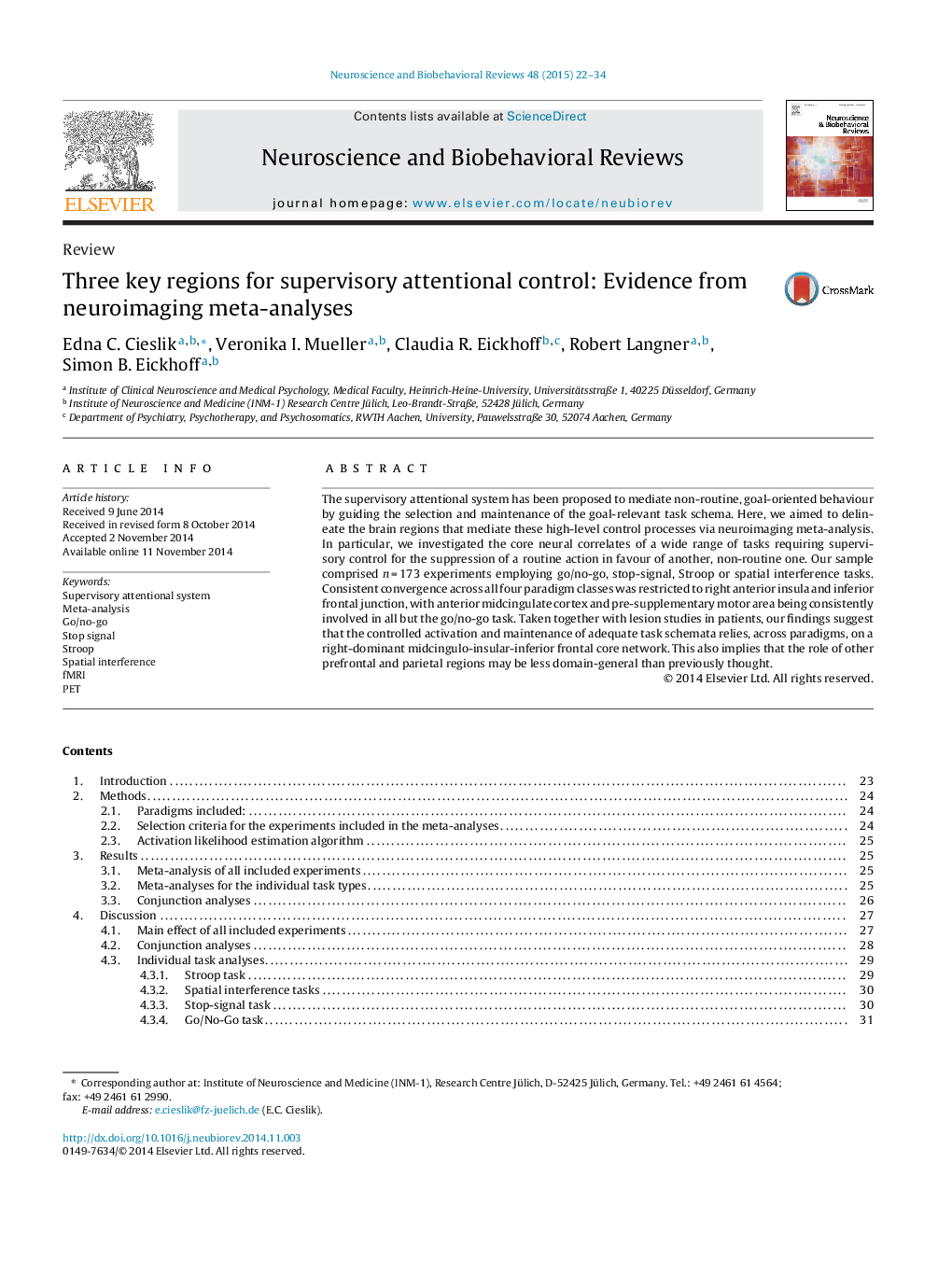| Article ID | Journal | Published Year | Pages | File Type |
|---|---|---|---|---|
| 937428 | Neuroscience & Biobehavioral Reviews | 2015 | 13 Pages |
•We delineated the key regions mediating supervisory attentional control.•Right anterior insula plays a central role in task set monitoring.•Right inferior frontal junction continuously reactivates the relevant task rule.•Posterior dorsomedial frontal cortex mediates energization of task schemata.
The supervisory attentional system has been proposed to mediate non-routine, goal-oriented behaviour by guiding the selection and maintenance of the goal-relevant task schema. Here, we aimed to delineate the brain regions that mediate these high-level control processes via neuroimaging meta-analysis. In particular, we investigated the core neural correlates of a wide range of tasks requiring supervisory control for the suppression of a routine action in favour of another, non-routine one. Our sample comprised n = 173 experiments employing go/no-go, stop-signal, Stroop or spatial interference tasks. Consistent convergence across all four paradigm classes was restricted to right anterior insula and inferior frontal junction, with anterior midcingulate cortex and pre-supplementary motor area being consistently involved in all but the go/no-go task. Taken together with lesion studies in patients, our findings suggest that the controlled activation and maintenance of adequate task schemata relies, across paradigms, on a right-dominant midcingulo-insular-inferior frontal core network. This also implies that the role of other prefrontal and parietal regions may be less domain-general than previously thought.
